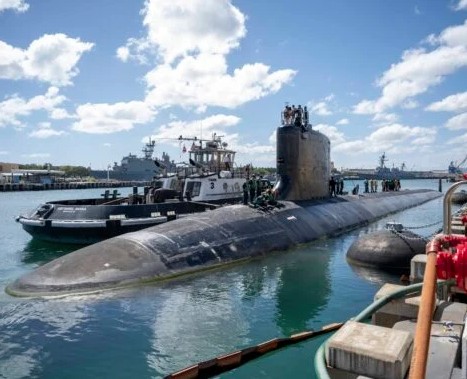The Virginia-class submarine program has been a crucial part of the U.S. Navy’s fleet since its introduction. These submarines are nuclear-powered and designed for stealth, intelligence gathering, and warfare. The program started in 1998, and as of 2024, a total of 40 submarines have been ordered.
Ongoing Production Challenges in the Virginia-Class Submarine Program
From 2011 to 2024, the Navy planned to purchase two submarines each year. However, despite this goal, the actual production rate has been much slower. Since 2022, production has dropped to just 1.2 submarines per year, leading to a growing backlog of submarines that have been funded but not yet completed.
The Navy and its industry partners are working to speed up production. Their goal is to build two submarines per year by 2028 and eventually increase this to 2.33 submarines per year. This is important not only to meet U.S. military needs but also to fulfill commitments to Australia under the AUKUS submarine agreement. To help boost production, the U.S. government has allocated billions of dollars in funding to improve submarine-building facilities and support the companies involved in manufacturing these submarines.
Despite these efforts, the Navy’s proposed budget for 2025 includes funding for only one Virginia-class submarine, which would be the 41st in the series. Initially, two submarines were expected to be included in the 2025 budget, but the Navy reduced this number due to financial constraints and concerns about production delays. The estimated cost of this single submarine is around $5.8 billion, though $1 billion of this amount is for future submarine materials and equipment.
Funding Breakdown and Procurement Debates
The budget for the Virginia-class program includes different types of funding. For the submarine planned for 2025, the Navy has already received some money in previous years. This includes approximately $1.87 billion in advance procurement (AP) funding and another $272 million in Economic Order Quantity (EOQ) funding, which helps buy materials in bulk for cost savings. For the 2025 budget, the Navy is requesting an additional $3.6 billion to complete the construction of the new submarine.
In addition to funding for the 2025 submarine, the budget request includes:
A major issue under debate is whether Congress should approve the purchase of two submarines instead of just one. To buy two submarines in 2025, an extra $3.2 billion would need to be added to the budget. The Navy argues that only one should be purchased due to budget constraints and the existing backlog of unbuilt submarines. However, some experts believe that sticking to a two-submarine-per-year plan would help keep the submarine-building industry stable and show military strength to rivals like China.
AUKUS Submarine Agreement and Its Impact on Virginia-Class Production
The U.S. is not only building Virginia-class submarines for its own Navy but also for its allies. Under the AUKUS agreement—a security partnership between the U.S., the U.K., and Australia—Australia will purchase three to five Virginia-class submarines from the United States. This deal is part of an effort to strengthen Australia’s naval capabilities in the Indo-Pacific region. However, because the Virginia-class program is already struggling to keep up with U.S. Navy demand, fulfilling this agreement adds extra pressure on production.
AUKUS Tests Game-Changing Autonomous War Machines!
To address these challenges, the U.S. is working on ways to improve submarine manufacturing. This includes increasing the number of skilled workers, expanding shipyard capacity, and streamlining the supply chain. Congress has approved large investments in the submarine industry to help achieve these goals, but it will take time for these improvements to show results.
For now, the decision on whether to fund one or two Virginia-class submarines in 2025 remains a major topic of discussion. The outcome will have significant implications for U.S. naval strength, the submarine industry, and international military partnerships.

